Ripe and healthy fruit is suitable for germination. It should be elastic to the touch and have a pleasant and rich aroma. The skin of a high‑quality fruit is golden brown. A green and excessively hard peel indicates the immaturity of the fruit, brown or maroon indicates that it is spoiled.
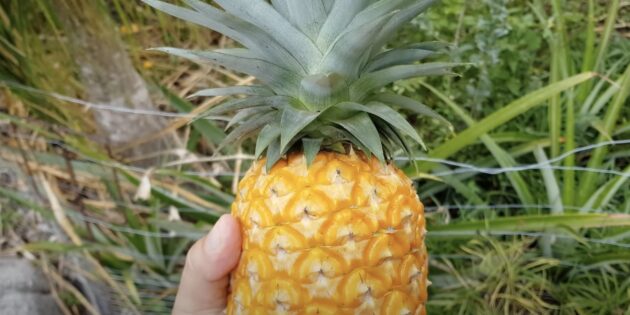
Make sure that the top of the pineapple is strong and represents a well-developed rosette of juicy dark green leaves without dry tips. There should be no dents, scratches, rot and mold on all parts of the fruit. Also make sure that no midges fly around the fetus. Sometimes they can hide in the leaf axils, so take a look there.
Hold the fruit with one hand, take the leaves at the base with the other and unscrew them. Do this carefully so as not to damage the top.
If you are afraid, cut off the top of the pineapple, capturing the minimum amount of pulp.
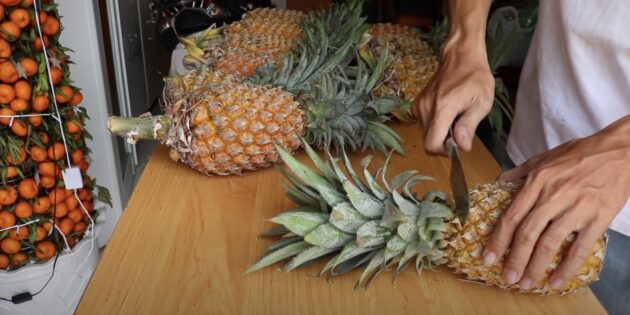
Remove unnecessary fruit residues around the greens carefully with your hands so that the top does not rot during the rooting process. Separate the lower leaves to expose the rosette by about 2 cm from the bottom.
To make the pineapple take root faster, you can pre-soak it in a root-forming solution. For example, stir 2 g of rhizome into 1 liter of water, pour the mixture into a small container and place the tip in the liquid to the level of the lower leaves for about 2 hours.
After that, take a glass of clean water. The neck of the container should be wide enough for the stem to fit freely, but not completely immersed in the liquid.
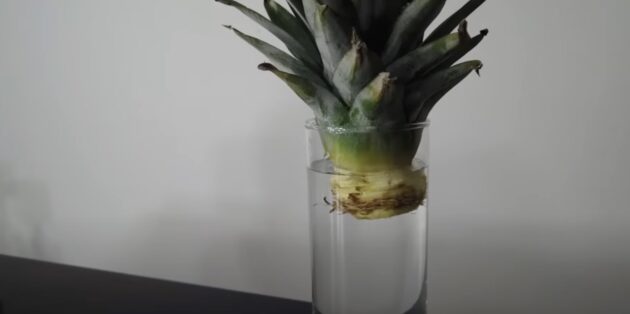
If there are no suitable dishes, you can use the following life hack: insert several toothpicks into the base of the stem at a height of 3-4 cm from the bottom and use them as a support. When the tip is immersed in water, the sticks will not allow the pineapple to sink completely into the glass.
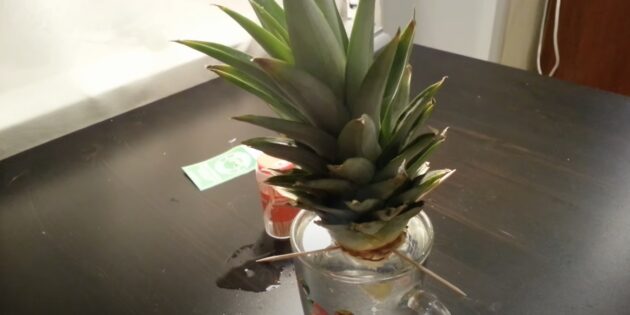
Put the container in a well-lit, dry place and be patient. The roots will take several weeks to form. At this time, it is important to periodically change the water and avoid sudden temperature changes. The stem will be ready for planting when the length of the roots reaches 5-6 cm. This is enough for the plant to gain a good foothold in the soil.
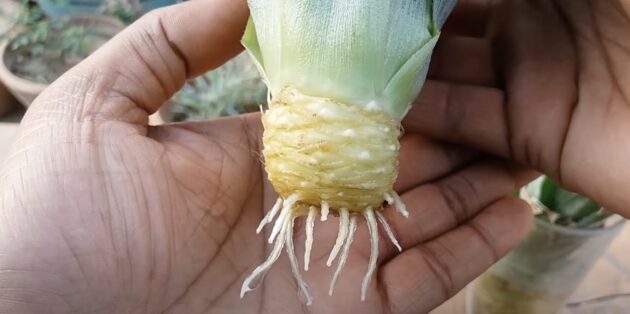
A container with a height and diameter of about 15 cm is suitable for growing pineapple. Make sure that there are drainage holes at the bottom to drain excess liquid. In a plastic pot, you can make them with a red-hot awl, soldering iron or drill.
Put river sand or expanded clay in a 3 cm layer at the bottom of the container. Top with loose and nutritious soil with an acidity level in the range of 5.0–6.0 pH. The simplest option is to use a special soil for growing cacti.
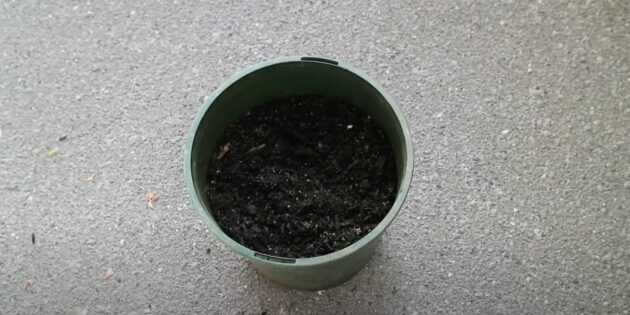
Make a hole in the ground in the center of the pot and place the pineapple roots in it. The stem can be buried no more than 2-3 cm, while the leaves should be located above the ground surface. Fill all the voids around the top with soil and carefully seal it with your fingers so that the pineapple sits securely in the pot.
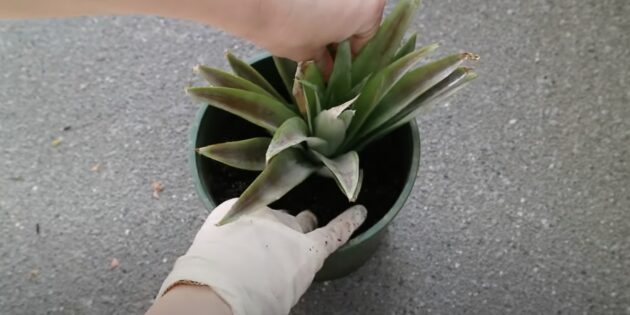
Pour water over the seedling so that the soil is properly moistened.
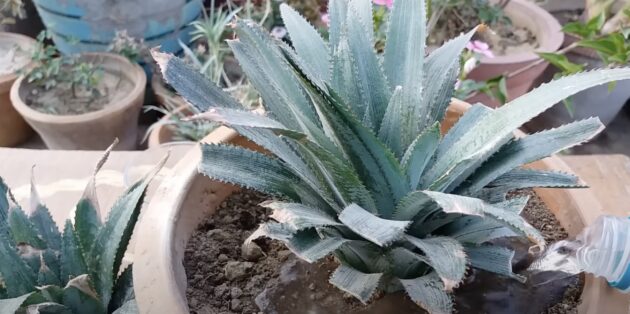
This will happen in about 1-1.5 months. Make sure that the soil in the pot is always moist, and water it as needed. Open the greenhouse for 10-15 minutes every day to ventilate the plant and avoid the appearance of fungal diseases.
To understand that the pineapple has taken root, take it by the base and gently shake it: if you feel resistance, then the rooting process has been successful. After that, you can remove the cover from the pot and begin the basic care of the plant.
For the harmonious development of a thermophilic culture, it is important to maintain a temperature within 22-25 ° C. And pineapple needs a lot of light. In spring and summer, it is enough to put a pot on a sunny windowsill. In autumn and winter, it is better to provide additional illumination to the fruit with phytolamps or conventional fluorescent lamps with a power of at least 36 watts per 1 m2. Turn them on for 8-10 hours a day.
The plant does not tolerate too wet soil. Focus on the topsoil in the pot: if it is dry, pour a warm liquid under the pineapple root or direct the stream directly into the outlet.

In between treatments, you can spray the leaves with water at room temperature to additionally humidify the air.
The fruit needs additional nutrition during the period of active growth — from the beginning of spring to the end of summer. At this time, fertilizers are applied once every 2 weeks. You can use ready‑made mineral, organic or organo-mineral products for pineapples, bromeliads, azaleas and rhododendrons. Consumption rates and methods of preparation of the solution vary depending on the type of top dressing and the manufacturer, so carefully read the instructions.
In addition, liquid vermicompost can be used. Dilute 20 ml of the product in 200 ml of warm water and pour the pineapple under the root, having previously moistened the soil. This portion is enough for one plant.
Be patient. With proper care, the pineapple will bloom no earlier than 2-2.5 years after planting. A red cone will first appear from the rosette of leaves. It will gradually grow overgrown with blue petals and increase in size — this is the future fruit.
The process of maturation of pineapple at home takes about 6-7 months.
This material was first published in May 2018. In December 2023, we updated the text.